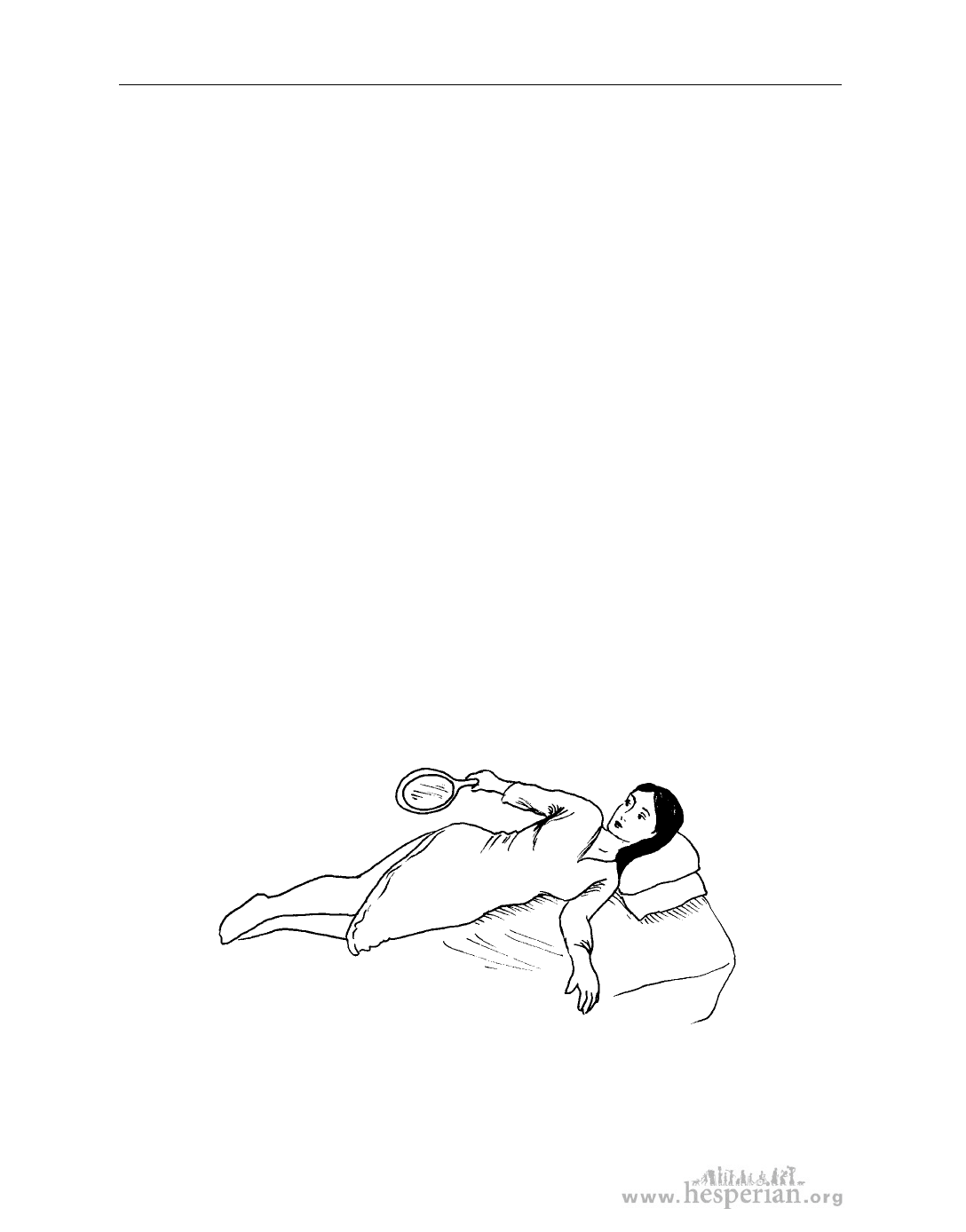
114 chapter 5: Taking care of your body
Pressure sores
Pressure sores are especially common for women who use wheelchairs or lie in
bed and do not move their bodies regularly. Pressure sores start when the skin over
the bony parts of the body is pressed against a chair or bed. The blood vessels get
squeezed shut, so that not enough blood can get to the skin. Eventually, a dark
or red patch will appear on the skin. If the pressure continues, an open sore can
develop and work its way deeper into the body. Or the sore can start inside the
body, near the bone, and gradually grow toward the surface. If a pressure sore is not
treated, the infection can spread through the body and kill the person.
Because her bones are less cushioned, a very thin woman is more likely to get
pressure sores. You are also more likely to get a pressure sore if:
• you use a wheelchair, or sit or lie in bed most of the time.
• you have urine leaking (incontinence).
• you get muscle spasms that cause your body to rub against sheets or clothes.
Signs:
• hot, red, or dark skin that does not get lighter in color when you press it
• a swelling or an open wound on the skin
When you notice the first signs of a pressure sore:
• change your position at least once an hour.
• use extra padding to protect the area from pressure.
• keep watching the area to see if it gets better or worse.
Examine your skin every day.
A Health Handbook for Women with Disabilities 2007